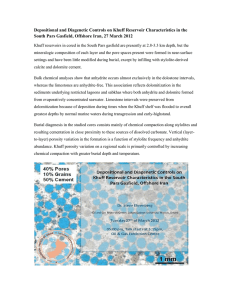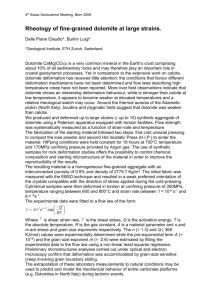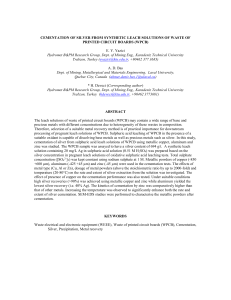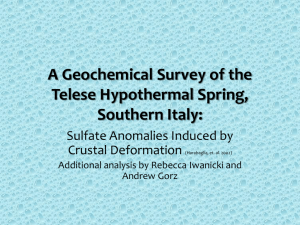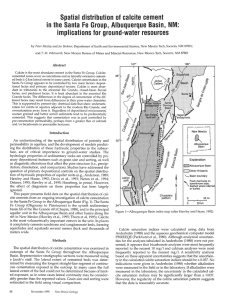The diagenetic development of the Callovian to Kimmeridgian
advertisement
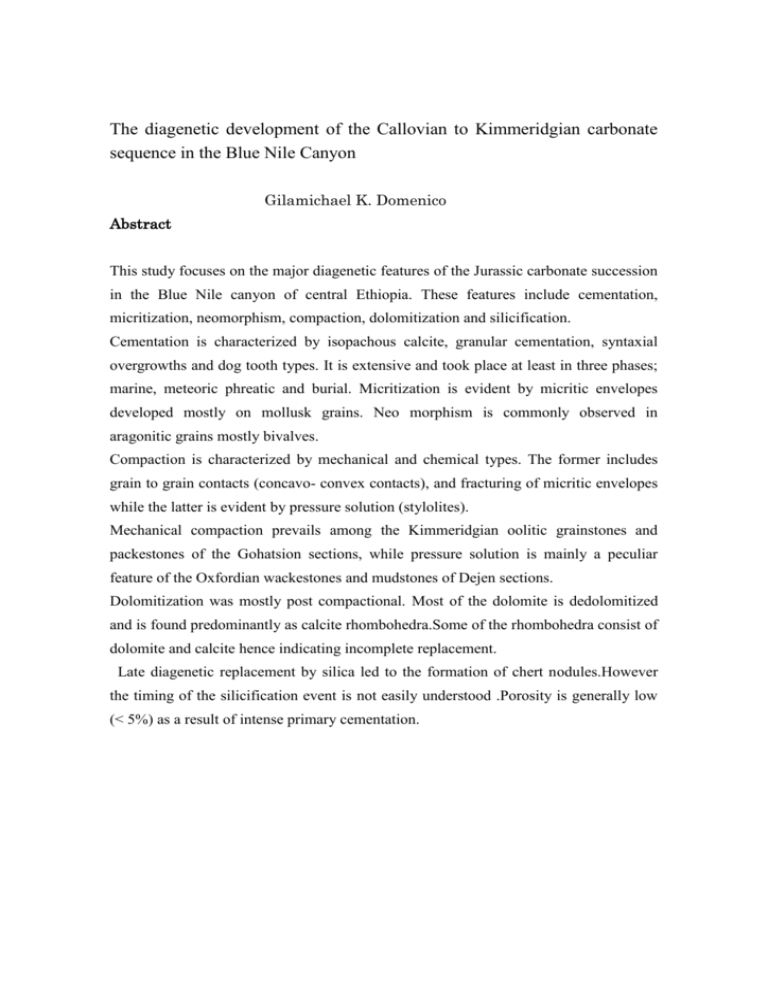
The diagenetic development of the Callovian to Kimmeridgian carbonate sequence in the Blue Nile Canyon Gilamichael K. Domenico Abstract This study focuses on the major diagenetic features of the Jurassic carbonate succession in the Blue Nile canyon of central Ethiopia. These features include cementation, micritization, neomorphism, compaction, dolomitization and silicification. Cementation is characterized by isopachous calcite, granular cementation, syntaxial overgrowths and dog tooth types. It is extensive and took place at least in three phases; marine, meteoric phreatic and burial. Micritization is evident by micritic envelopes developed mostly on mollusk grains. Neo morphism is commonly observed in aragonitic grains mostly bivalves. Compaction is characterized by mechanical and chemical types. The former includes grain to grain contacts (concavo- convex contacts), and fracturing of micritic envelopes while the latter is evident by pressure solution (stylolites). Mechanical compaction prevails among the Kimmeridgian oolitic grainstones and packestones of the Gohatsion sections, while pressure solution is mainly a peculiar feature of the Oxfordian wackestones and mudstones of Dejen sections. Dolomitization was mostly post compactional. Most of the dolomite is dedolomitized and is found predominantly as calcite rhombohedra.Some of the rhombohedra consist of dolomite and calcite hence indicating incomplete replacement. Late diagenetic replacement by silica led to the formation of chert nodules.However the timing of the silicification event is not easily understood .Porosity is generally low (< 5%) as a result of intense primary cementation.
